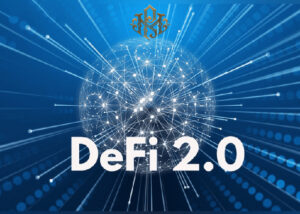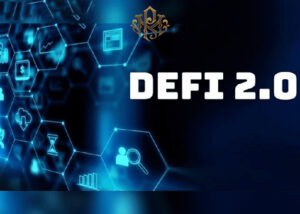
Close



DeFi 2 (Decentralized Finance 2) is an improved version of DeFi 1 (Decentralized Finance 1), which started working in December 2021. This new version is designed to improve various issues such as security, centralization, scalability, information access and liquidity that existed in DeFi 1.
From the point of view of cryptocurrency experts, it is due to its decentralization capability. Cryptocurrency projects that use DeFi 2 give their users the right to vote and are attracting the attention of market players by focusing on decentralization.
As an important project in the field of digital currencies, DeFi 2 provides decentralized financial services to people who own crypto wallets. To a large extent, this project was able to provide reforms such as providing KYC and AML methods to the digital currency market to adapt to the laws of different countries and governments and ensure the security of users.

One of the main changes brought about by DeFi 2 is the removal of risks associated with liquidity providers in liquidity pools or LPs. In fact, in LPs or liquidity pools, liquidity providers provide liquidity to other tokens and currencies in the pools by injecting capital and receive a fee as a reward. By making a change in the price ratio of tokens, the possibility of loss of capital of suppliers also increases.
DeFi 2 addresses this issue by providing financiers with insurance as a solution to this risk, which increases the incentive to invest in liquidity pools and provides users with greater profits with greater certainty. Also, regarding the limitations of DeFi, these problems of some DeFi protocols include issues such as providing high-cost services, low speed and dependence on oracles and third-party information, problems in complying with the principles of decentralization, and lack of security for cryptocurrency market users. These are the issues that many of them intend to fix in DeFi 2.

By investing in LPs and using smart contracts in DeFi 2, losses may occur when the price of tokens in liquidity pools changes. But DeFi 2 protects investors against these risks by providing an insurance fund of fees received. In other words, if there are not enough fees to compensate for the losses, DeFi 2 will use its new cryptocurrencies to compensate for these shortages and, if necessary, keep these cryptocurrencies for later use or even eliminate the supply. also uses Also, problems related to taking loans and paying interest will be solved in DeFi 2.
The full adoption and use of DeFi 2 projects is still uncertain for some users of the cryptocurrency market, but these projects have great potential for market development. For example, the tokens that support DeFi 2 are mostly governance that helps with decentralization. Although there are uncertainties, with proper valuation and full awareness of these projects, DeFi 2 can be expected to contribute greatly to the development of the cryptocurrency market.
Regarding DeFi 2 and the tokens that support it, it is better to note that these projects are still under development. Therefore, before making an investment or using them, be sure to carefully examine their ambiguities and full details. According to the explanations provided, it seems that DeFi 2 and other similar projects intend to solve the problems of providing financial services in the field of digital currencies and provide better facilities for users. But to make sure you choose the best option, it will be useful to consult with financial and digital currency experts.